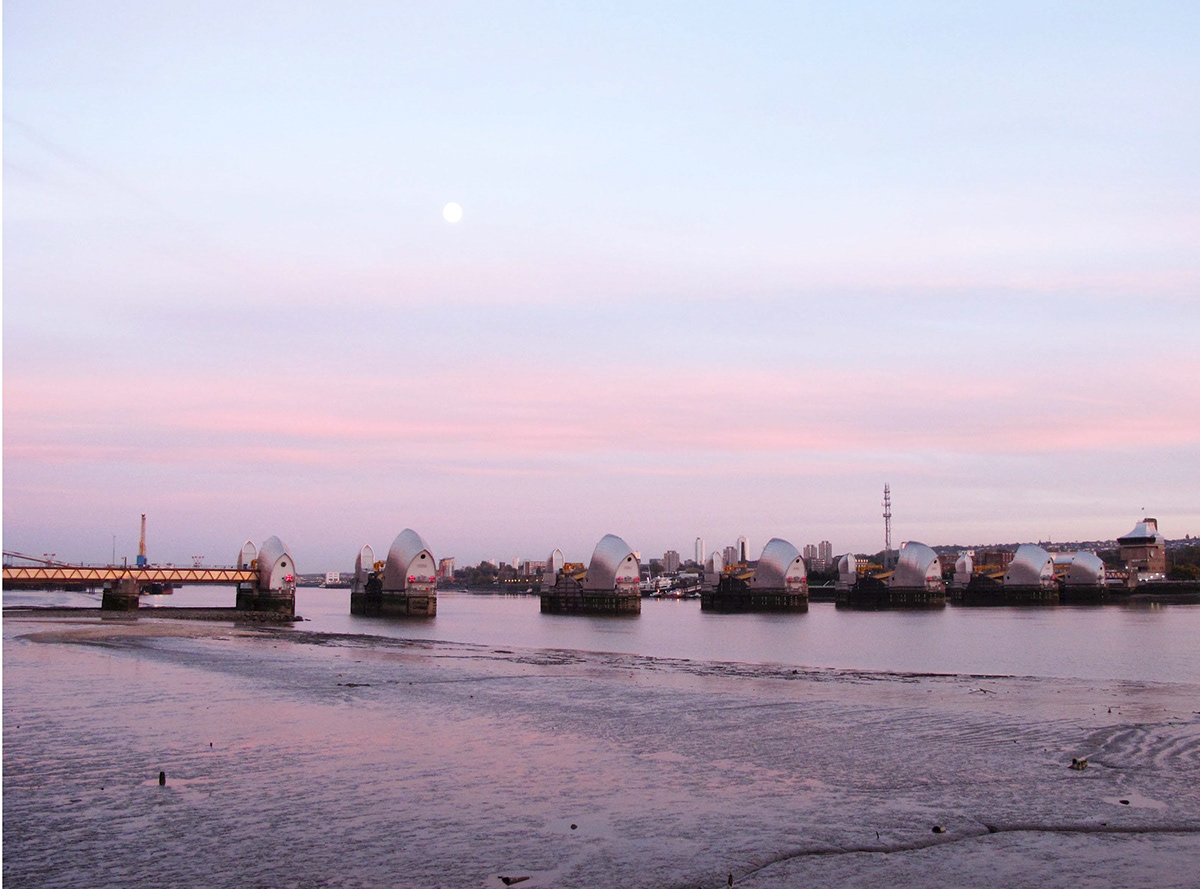
The Thames Barrier

Escaping London in London
The Brief
An escape is a transition to a new state or space or a momentary swerve from the everyday. Escape exists as a construct or system that removes a person or group from one particular state to another. This state can be both physical or psychological.
We were asked to identify an opportunity or desire to create an escape. The escape should have a developed material culture that can exist as a series of systems, architectures, hacked elements and tools.
Explore the escape across a range of scales. View it as system that operates within a host system.
We were asked to observe and respond to reality, finding and imagining opportunities for subversion, obfuscation and opportunity.
The Idea
Escape London while remaining in London; Escaping from New Cross to my home during a surface water flood
Escape London while remaining in London; Escaping from New Cross to my home during a surface water flood

Interpretation
I wanted the project to be culturally grounded and to be of use to the world.
I set out to develop an escape that was both socially and culturally relevant, based on my understanding of how significant ‘escaping’ can be for the wellbeing of individuals and society as a whole. The primary focus was importance of mental and physical escape; empowering individuals to escape social restrictions and currently relevant natural disaster concerns, using the skill of making as a tool to provide both physical and mental escape.
From my reconnaissance I planned an escape from the studio to my home in east London during a flash flood. This was inspired by a visit to the Thames barrier, on which we rely on to keep us flood free.
The concept was based around the low lying and very poor areas of east London and the fact that flood prevention funding has been decreasing year on year in the capital. Using DEFRAS flood prediction mapping I realised that my home and Goldsmiths are just outside the predicted flood partial areas and that there is a clear correlation between the flooded areas and the lower income areas of London.
Process
I mapped the route in different ways and proceeded to design an amphibious suit, as my escape would cover both land and water.
I made a prototype and designed a system around it.
The suit should be manufactured at home and I would teach people how to do so. It could be made from found materials or leather.
The system - making, mapping and executing - would aim to empower the less well-off to help them and encourage people to think about the future and their part and affect on it.

Mini prototype

Gradient map - compiled by walking and sketching the route and cross-referencing against OS maps

Mapping - walking route, as the crow flys, flood route considering tides, river flow and timings

Designing the route

Prototype - the amphibious suit

Route Map - With water marked at 20m, showing key landmarks for navigation
The Outcome
A short movie filmed using a self-constructed monopod, recorded along the route at 5mts.
Addressing social problems in society through making.
In order to make a difference to society and encourage learning & mobility the idea would need to be brought into the real world with a network of suport systems.
I wish to set up a community group in order to teach people how to make the suit. Inlisting more designers and makers to help teach and refine the concept and develop it into an on-going programme of education.
Also the suit is not enough facilitate an escape in its self. As I discovered in planning phase there are a lot of factors and skills which need to be considered, such as wind direction and speed, orienteering, mapping, tides, tacking and undercurrents. So in reality, to make a difference these skills would need to be taught alongside the physical making skills.
I believe that this could not only provide an escape from flooding but also empower people to escape marginalisation in society through learning new skills and getting together; also teaching people to make and not be so reliant on others such as shops, the council and the government.
The Escape
Conclusion
I have designed a system to help people facilitate their own escape.
I have designed a system to help people facilitate their own escape.
The way out is to rely on ones self; to be able to facilitate one's own escape. This is achievable by teaching people a range of skills with which they can use in multiple constructive ways.









